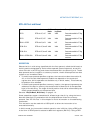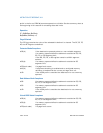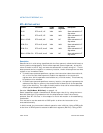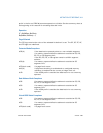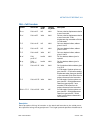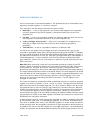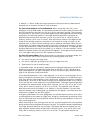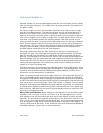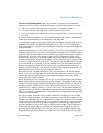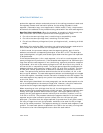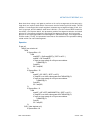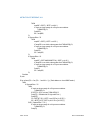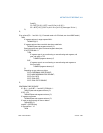
3-88 Vol. 2A CALL—Call Procedure
INSTRUCTION SET REFERENCE, A-M
the first instruction in the called procedure. The operand can be an immediate value,
a general-purpose register, or a memory location.
This instruction can be used to execute four types of calls:
• Near Call — A call to a procedure in the current code segment (the segment
currently pointed to by the CS register), sometimes referred to as an intra-
segment call.
• Far Call — A call to a procedure located in a different segment than the current
code segment, sometimes referred to as an inter-segment call.
• Inter-privilege-level far call — A far call to a procedure in a segment at a
different privilege level than that of the currently executing program or
procedure.
• Task switch — A call to a procedure located in a different task.
The latter two call types (inter-privilege-level call and task switch) can only be
executed in protected mode. See “Calling Procedures Using Call and RET” in Chapter
6 of the Intel® 64 and IA-32 Architectures Software Developer’s Manual, Volume 1,
for additional information on near, far, and inter-privilege-level calls. See Chapter 6,
“Task Management,” in the Intel® 64 and IA-32 Architectures Software Devel-
oper’s Manual, Volume 3A, for information on performing task switches with the
CALL instruction.
Near Call. When executing a near call, the processor pushes the value of the EIP
register (which contains the offset of the instruction following the CALL instruction)
on the stack (for use later as a return-instruction pointer). The processor then
branches to the address in the current code segment specified by the target operand.
The target operand specifies either an absolute offset in the code segment (an offset
from the base of the code segment) or a relative offset (a signed displacement rela-
tive to the current value of the instruction pointer in the EIP register; this value
points to the instruction following the CALL instruction). The CS register is not
changed on near calls.
For a near call absolute, an absolute offset is specified indirectly in a general-purpose
register or a memory location (r/m16, r/m32, or r/m64). The operand-size attribute
determines the size of the target operand (16, 32 or 64 bits). When in 64-bit mode,
the operand size for near call (and all near branches) is forced to 64-bits. Absolute
offsets are loaded directly into the EIP(RIP) register. If the operand size attribute is
16, the upper two bytes of the EIP register are cleared, resulting in a maximum
instruction pointer size of 16 bits. When accessing an absolute offset indirectly using
the stack pointer [ESP] as the base register, the base value used is the value of the
ESP before the instruction executes.
A relative offset (rel16 or rel32) is generally specified as a label in assembly code. But
at the machine code level, it is encoded as a signed, 16- or 32-bit immediate value.
This value is added to the value in the EIP(RIP) register. In 64-bit mode the relative
offset is always a 32-bit immediate value which is sign extended to 64-bits before it
is added to the value in the RIP register for the target calculation. As with absolute
offsets, the operand-size attribute determines the size of the target operand (16, 32,




